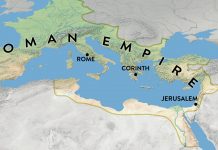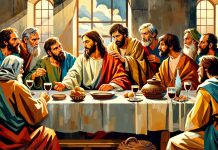The birth of Jesus Christ is one of the most significant events in human history. Celebrated at Christmas, by some with emotion, by others with indifference, most of the time the holiday loses sight of the main Character. Religious meanings remain in the shadows, while commercial dimensions are pursued at all costs.
The mystery of the incarnation: Why December 25?
Christmas is celebrated annually on December 25. It is accepted, however, that the exact date of Jesus’s birth is not known. The New Testament evangelists reported about the birth of the Saviour without mentioning a specific date, and the Church of the first Christian century did not celebrate the birth of the Lord.
Beginning in the 2nd century AD, Christian writers spoke about the probable date of Jesus’s birth, without considering it a holiday. However, opinions were divided, some opting for May 20, others for March 29 (by correlation with the Jewish Passover), or September 29 (by association with the old Feast of Tabernacles).
At the beginning of the 2nd century AD, Bishop Telesphorus, leader of the Western Church, is said to have argued that the church service to celebrate the birth of Jesus should take place in December. However, there is no convincing evidence in this regard.[1] In the first three centuries of church history, Christians celebrated the Saviour’s birth on various days of the year.
The Roman emperor Aurelian (214-275 AD) in 274 proclaimed December 25 as Dies Natalis Solis Invicti (the Birth of the Invincible Sun). The festival was dedicated to sun worship, and was promoted throughout the empire.[2]
Then, in 320 AD, Pope Julius, bishop of Rome (337-352), took the first step towards the officialisation of the celebration of the birth of the Lord on December 25. With the Emperor Constantine’s conversion to Christianity and the proclamation of Christianity as the official religion, a process of assimilation of the old pagan beliefs began, with many holidays being absorbed into Christianity.
The winter holidays, which span two weeks (December 24-January 6), overlapped with the ancient festivals honouring the return of the sun at the winter solstice, the Roman Saturnalia (December 17-23), and the festival of the god Mithras (December 25). Saturnalia was a harvest festival, the date of which varied every year, between December 17 and 23, being an occasion for debauchery and excessive parties.
Gradually, December 25th became a reference holiday. The Emperor of the Franks, Charlemagne (742-814 AD), was crowned by Pope Leo III as Imperator Augustus of the Holy Roman Empire on December 25, 800 AD. Emperors and influential personalities from different periods of the Christian era have confirmed the existence of a celebration dedicated to the birth of the Saviour.
There were also cases in which the Christmas celebration was prohibited. For instance, Oliver Cromwell banned the celebration of Jesus’ birth in England through the so-called “Blue Laws”, between 1647-1660. He opposed the traditions that accompanied Christmas and considered them immoral. In 1660 he was removed from power and the law prohibiting the celebration of Christmas was abolished.
Also, during the religious revival movements there were Christians who opposed this celebration. The Puritans of the 16th century, who promoted the reform of the Anglican Church in accordance with the principle of Sola Scriptura, were against saints’ days, the clerical absolution of sins, godparents at baptism, and the celebration of Christmas. They continued to promote these beliefs in the New World, where they emigrated.
There are no arguments for associating Jesus’ birth with December 25. A closer connection can be identified when looking at the Roman celebrations, which took place during winter. It is a good thing, however, that the Christian world wishes to have a day every year to rediscover the meaning of the incarnation of the Son of God.
The truth about Santa Claus
An ancient legend says that while looking for accommodation in Bethlehem, Joseph and Mary arrived at the door of a cold-hearted inn-keeper called Claus. Evil by nature and devoid of any feelings, Claus is said to have refused to accommodate the couple because they seemed poor. However, his wife, being a generous soul, hosted them in the animal stable without her husband’s knowledge.
Later finding out about his wife’s deed, Claus was terribly angry and cut off her hands as punishment. However, the Virgin performed a miracle, glueing the hands of Claus’s wife back together. The miracle had the gift of causing a profound change in Claus’s character, who became a good man.
The historical and religious tradition of Santa Claus is generally linked to a bishop from Asia Minor, Saint Nicholas of Myra, who at the beginning of the 4th century was esteemed for his acts of generosity. He died on December 6, 345 AD, the date that would become the feast of Saint Nicholas, after he was canonised in the Roman Catholic Church. “The evolution from St. Nicholas to Santa Claus involves the integration of many traditions.”[3]
In the tradition of the Nordic countries, legends are found that describe small creatures called Nisse or Julenisse, dressed in red and with a white beard, which were believed to bring gifts after the Christmas dinner. In Germany, Winterman is the legendary character who comes down from the mountains to announce the arrival of winter. In the Netherlands, the character called Sinterklaas goes around the country to put food in the boots of obedient children or a birch stick for those who have been disobedient.
When the Dutch emigrants founded the New Amsterdam colony in the New World, their children enjoyed the visit of Saint Nicholas. Later, under the authority of England, the colony became New York and the majority consisting of Presbyterian Englishmen, not wanting to keep a Catholic custom, transferred the visit of the mysterious Santa Claus to December 25 and changed the image of the character.
Writers such as Charles Dickens, in A Christmas Carol (1843), and Washington Irving, in Keeping of Christmas at Bracebridge Hall (1822), popularised the holiday. Around the same time, Clement Clark Moore (1779-1863), poet and theology professor, published a poem entitled The Visit of Saint Nicholas, in which he told the story of an old, cheerful and playful elf, who flew in a miniature sleigh, drawn by eight equally small reindeer.
In 1860, the American illustrator and caricaturist Thomas Nast (1840-1903), inspired by the European stories about Saint Nicholas, gave him a face, creating the one who would become so famous under the name of Santa Claus. Santa Claus was dressed in a red, furred tunic, wore a wide leather belt, and had a bushy white beard. Norman Rockwell painted Santa Claus for the Saturday Evening Post publication, in 1931.
The most widespread image today is the one created by Haddon Sundblom, in the same year, in the context of a Coca-Cola advert. Santa Claus came to be associated more and more with the religious celebration of the Lord’s birth, being an extremely popular character. Santa’s gifts drew attention away from the Gift that God offered to mankind in the person of His Son.
The baby coming down from heaven
The writings of the New Testament represent the primary historical source of information about Jesus. The accuracy of the biblical writings has been confirmed by archaeological discoveries. William Albright[4] and Sir William Ramsay[5] are among the archaeologists who argued that the texts of the Bible are anchored in historical reality, being more than simple myths or legends.
However, for some, Jesus’s divinity is simply an unjustified pretence. For others, Jesus Christ remains only one of the great teachers of mankind, a good man who lived a virtuous life, a prophet who preached about love, a rabbi whose teachings we should take into account.
The birth of Jesus
According to the accounts in the Gospels, Jesus Christ was born during the reign of Herod the Great (74-4 BC), the king appointed by Rome to govern Palestine and the one who cunningly wanted to take the life of the baby born in Bethlehem: “When Herod realised that he had been outwitted by the Magi, he was furious, and he gave orders to kill all the boys in Bethlehem and its vicinity who were two years old and under, in accordance with the time he had learned from the Magi” (Matthew 2:16).
The infanticide decree did not reach Jesus, because His family fled to Egypt, where they remained until Herod’s death. Herod the Great died in 4 AD, which leads to the conclusion that Jesus was probably born in 5 or 4 BC. The apparent chronological contradiction is explained by the fact that Dionysius Exiguus (533 AD), who calculated the beginning of the Christian era a few centuries after the birth of Jesus, made a calculation error of about four or five years. The date of Jesus’s birth is unknown, but the fact of his birth is authenticated by the mentioned evidence.
The idea that God became man by being born as an infant into the family of Joseph and Mary and that He miraculously intervened in human history was attacked by the “demythisation program”[6] of theologian Rudolf Karl Bultmann (1884-1976). He concluded that much of the New Testament is made up of myths. In his opinion, the writers of the Bible sought to express what happened to them on an existential level and therefore their accounts do not fully represent reality.
According to Bultmann, the coming of Jesus into the world is a myth and, from this, people must understand only the intention of Divinity to draw us to Itself. Bultmann’s theory does not take into account the fact that the Gospels recount the incarnation of Jesus Christ in a concrete historical framework, supported by clear testimonies. At the same time, there is no indication that the biblical authors would have considered the birth of Jesus a simple fairy tale.
The merit of the biblical record is that it frees the fallen human from mythical notions, explaining to them that God revealed Himself “supremely (…) in Jesus Christ in once-for-all incarnation.”[7] It is true that the mystery of the incarnation of the Son of God is a difficult concept to assimilate intellectually, but biblical documents lead us to the conclusion that God became human in the strict sense of the word, in a historical manifestation, but in a manner that transcends logic.
John the Evangelist uses the metaphor of the Logos to describe the coming of the Son of God among people: “The Word became flesh and made his dwelling among us. We have seen his glory, the glory of the one and only Son, who came from the Father, full of grace and truth” (John 1:14).
Of course, the Son of God could take the form of a human without being born of a woman, but He wanted to be considered an ordinary human. Mary, His mother, became pregnant through the supernatural manifestation of the power of the Holy Spirit. Both she and her future husband, Joseph, were visited by God’s angel and told that the Baby would be called Jesus, which means “Jehovah saves.”
The first witnesses
Jesus was born in a stable, because in the “inn” there was no guest room available, not even for a pregnant woman. “The filthiest place in the world was the first room of the only Pure Man ever born of woman.”[8] On the plains around Bethlehem, there were some humble shepherds, to whom God’s angels brought the good news of the birth of the One who was to save humanity from its sinful condition.
“Above the hills of Bethlehem are gathered an innumerable throng of angels. They wait the signal to declare the glad news to the world. Had the leaders in Israel been true to their trust, they might have shared the joy of heralding the birth of Jesus. But now they are passed by.”[9]
The shepherds, on the other hand, as an embodiment of the simplicity of faith in God, quickly went to the Baby lying in the manger and announces the revelation they had received. The Only One, born of a woman, was accepted by some and rejected by others—a situation similar to the reality of the 21st century, when some people enjoy the peace of mind offered by the Saviour, while others remain indifferent.
The Gospels also describe the Magi from the East, influential people, renowned for their knowledge, who sought Jesus Christ to worship Him: “On coming to the house, they saw the child with his mother Mary, and they bowed down and worshipped him. Then they opened their treasures and presented him with gifts of gold, frankincense and myrrh” (Matthew 2:11).
Guided by the star that was shown to them, these rich and wise experts in the mysteries of heaven stopped at the manger and, in a symbol of humility, bowed before the Child. Their gesture was a public testimony to the fact that the birth of Jesus was a descent among men of the One who is above kings and emperors.
The purpose of the first coming
Postmodern Christianity, locked in meaningless traditions, needs to rediscover the meaning of the birth of Jesus Christ—the distinctive mark of Christianity. It has been suggested that events similar to the incarnation of the Son of God are also found in other religions. For instance, Sidartha Gautama (Buddha) is said to have also been a descendent of the divine among people. The birth of Jesus, however, is a radically different event, unique and full of meaning.
“Only when we allow the incarnation of Jesus to become an experiential reality in our lives, in accord with its background of history and meaning, can we understand the reality of Christmas.”–James Fowler
The originality of this event must be associated with God’s ultimate goal. The Word became flesh so that the sinful human could discover and understand God’s love and His concern for the salvation of created beings. Through the incarnate Son of God, “the way to communion with God as a communion of persons that we cannot reduce to objects has been opened to us and, through this, also the way to full communion with our fellow men. Through His incarnation as a man, Christ made communion with Himself as God in culminating human form accessible to us, or rather with the entire Holy Trinity.”[10]
His incarnation means, above all, the discovery of a God who wants us for Himself. His beauty is eternal, His reign will have no end, and the whole of history is inconceivable without Christ, said the French writer and philosopher Ernest Renan in the book The Life of Jesus. The mystery of the incarnation and His exemplary and sinless life highlight His saving death for everyone who believes in Him.
The chasm between us and God ceases to exist, because Jesus Christ is able to understand and help us to cross the existential gap created by sin between us and Divinity. Christmas can be a good occasion, though not necessarily the only one, to remember the saving gesture of the Saviour’s incarnation. It can be a good occasion to remember our quality as beings with spiritual needs, a moment to look more carefully at what God has given us.
When received into our homes and souls, Jesus Christ will guide us towards acts of kindness, which will make the lives of our fellow people happy. Last but not least, remembering the first coming of Jesus must focus our attention on the event that will complete it and give it meaning—the Second Coming.




















